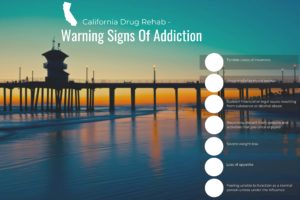What are the best drug intervention methods? There is a wide range of drug intervention methods for drug addiction and alcohol addiction. Each method is used and condoned by most professionals in order to properly treat each individual addict. In this article, we will review each type of method, and explain the details involved in each one.
Understanding Drug Intervention Methods
While most drug intervention methods for drug and alcohol addiction fall into the “direct intervention” category, there are a few other forms called “indirect intervention”. In some cases, there such cases of a method called “forcible intervention” as well.
Direct Intervention Method
As for the direct intervention category, this is where the family and friends of the substance abuser confront the addict in the presence of a professional interventionist. The professional interventionist helps the family set up a meeting ahead of time, prepares them with what to say, and then helps guide the overall intervention as it happens. This way they can help things run smoothly and redirect focus if tensions arise or issues come up.
Within the direct drug intervention method, there generally is no room which allows the addict to have an input. Instead, however, decisions for their treatment is set up for them ahead of time and already decided upon by their loved ones. All that is left for the addict to do is accept and begin their treatment sessions.
Indirect Drug Intervention Method

Indirect drug intervention methods involve the loved ones of a substance abuser interacting with them so that the addict’s surrounding is more calm and peaceful in facilitating a recovery from addiction.
In this case, the interaction with interventionists do not necessarily include the addict, but it is mainly communication between the family members in order to persuade their substance addicted loved one to get help. With care and support, the family attempts to use the interventionist’s advice to persuade the addict into treatment.
This is different than the direct intervention method. The biggest difference is that instead of ending an official meeting with a type of “ultimatum” (for example, “if you don’t enter treatment, we will no longer support you financially”), the family remains open communication with the addict in hopes they will decide on their own.
Forcible Drug Intervention Method
This method is carried out mainly by an intervention professional. The primary aim of this particular method is to have the addict commit to a treatment method completely against their will. While this type of intervention may be formal, that is, having the interventionist present at the time of confrontation, it may also be informal by not having them present.
This form of forced intervention can be effective. However, it is important to note that as with most individuals in addiction recovery, a highly successful first step is in the individual themselves wanting to get well. If someone doesn’t want to get well on their own, they are likely to resist or even rebel in treatment program settings.
The main thing that can be of use in this drug intervention method is the benefits of assisted detox upon entering a rehab center. Detox is a crucial step in the recovery process. With inpatient rehab, medical professionals oversee the patient’s detox process until they are completely clear of drugs. Doing so in a safe environment is a great first step to pursuing a sober life.
7 Drug Intervention Methods for Addiction

What are the different kinds of drug intervention methods?
Drug Intervention Methods – Tough Love
This type of drug intervention method can take both direct or indirect forms. This is typically the go-to intervention for those who have a difficult time in saying no to their addicted loved one. For this approach of tough love, it is the best mechanism for the family who wishes to stop enabling their addicted loved one and see to it that he or she gets the help they need to become sober.
The tough love method involves setting consequences for actions including kicking them out of the house, discontinuing to pay their phone bills etc, stop loaning him or her money, and stop doing their laundry. Among many other things, the tough love approach gives the clear, active signal to the addict that the family will no longer support their habits or enable them to continue using drugs.
Since this method can become brutal, especially since it involves intense emotions, it often scares family members. It can be scary because they do not want their addicted loved one to feel as if they no longer love them. Many family members worry tough love might push their addicted loved one to distance him or herself from them. Though this method may seem easy, it is not safe to practice or implement this method without the help of a professional interventionist.
Drug Intervention Methods – ARISE Intervention
This drug intervention method gives the best of both worlds by involving both direct and indirect intervention methods. Rather than focusing on the destructive habits of addiction and the effects it has on both the user and those around them, it focuses on the family as a group and how they work together in order to solve their loved one’s addiction problem.
This drug intervention method has to be one of the most effective mechanisms since it focuses on bettering the family uni. Since, while the addict is enrolled and undergoing treatment, the family is also going through educational counseling sessions, learning to manage life with an addict, how to help their loved one after treatment is over as well as how to recover from the destruction that has occurred due to their loved one’s substance abuse.
This method is effective at addressing possible root causes of addiction as well. More often than not, addiction can act as a symptom of past pain, undealt with personal issues, or unconfronted family wounds. In this case, ARISE interventions look at and confront addiction from all angles.
Drug Intervention Methods – Crisis Intervention
The crisis drug intervention method is very direct and is highly important for the individuals who find him or herself in a growing situation.
The crisis intervention is most suitable for those suffering from mental breakdowns, mental health disorders as well as substance abusers. In it’s direct form, it includes the loved ones gathering around the addict showing their love and concern while letting the addict know how their behavior has affected the family.
Crisis intervention can become forcible as well. In this, if the substance addict refuses to get help and continuously denies their addiction problem, then the interventionist may be able to get the individual involuntarily evaluated for commitment to treatment.
Drug Intervention Methods – Confrontational Model of Intervention
This drug intervention method is more traditional and is 100% direct. This is where the family and friends of the substance abuser challenge the habits of their loved one by pointing out consequences and destructive behaviors caused by the addict as a result of their substance addiction as well as laying out firm expectations of recovery.
Confrontational interventions are usually a one-time occurrence. Following closed meetings with the family and professional interventionist organizing the event, the confrontational intervention acts as a “one chance” for the addict to heed the recovery options.
If the addict accepts treatment on the first attempt and enters treatment, then the family resumes to their regularly scheduled life. However, if the addict denies the help their family offers, then there may be consequences, similar to that of the tough love intervention method mentioned above.
Drug Intervention Methods – Johnson Model of Intervention

The Johnson Model drug intervention method goes hand in hand with the previously mentioned confrontational method. The Johnson Model of Intervention focuses mainly on educating the family and loved ones on how exactly to confront their substance abused loved one and encourage him or her to get help for their problem.
This method came about in the 1970s when a priest named Vernon Johnson wanted to see addicts and alcoholics get sober, no matter how badly their addiction affected the family. His idea was to have the family come at the approach with unconditional love, instead of seemingly “ganging up” on their loved one who struggled with addiction. This drug intervention method goes through teamwork, planning, care, goa-oriented treatment, and effective treatment options for the addicted individual.
Drug Intervention Methods – The Love First Approach to Intervention
This method also takes a direct approach and occurs on neutral grounds, such as in the comfort of one’s own home. The Love First Approach encourages the family of the substance abuser to provide love and compassion in order for the addict to go smoothly through treatment and with sympathy from their loved ones.
In this method, it is important that all persons involved in the intervention stay calm and understand that the substance addict will go through some tough situations, including a possible relapse and severe withdrawal symptoms. The key is to not react with conflict and avoid all possible causes of tension. However, the family should include moments of reflection on better times before substance abuse and create a strong support system.
Drug Intervention Method – The Systematic Family Model of Intervention
This form of intervention is the typical intervention that we all know and are accustomed to. It focuses on bringing the family together to communicate their concerns and feelings to their substance addicted loved one, while not playing the blame game or becoming confrontational such as to cause an uncomfortable situation.
This is the main type of drug intervention method as seen on reality TV shows such as “Intervention”. Although these shows often dramaticize the events leading up to the meeting, such instances can be very real and require the intense emotional support offered by the interventionist. Families, especially ones that feel they are all very close and well-behaved, can greatly benefit from this type of intervention.
A professional interventionist should also be present and act as a mediator in this situation so ensure that the engagement is peaceful and communicative. Therefore, if emotions run high, they can guide the meeting to run smoothly. When someone acts out in an aggressive or blameful way, the interventionist can offer tools and support in order to maintain a calm, loving, and encouraging atmosphere.
Which Drug Intervention Method is Right for My Family?
Deciding on which type of drug intervention method to undergo is different for each family. Sit down and think about your main family values. It is also wise to take into consideration each person’s perspective, struggle, and personality.
When you decide what type of intervention to hold for your loved one, choose carefully who will be a part of the intervention process. It should generally only be immediate, close family members and loving relatives. It’s not a reunion… it’s an intervention.
The important thing is, if an intervention is needed, go ahead and contact a professional interventionist. Don’t hold off just because you can’t exactly decide which type of intervention method to go with. It’s better to have the intervention with a caring professional who can guide you through it than to wait in fear and miss out on the opportunity for your loved one’s recovery.
Sources
“Development of a structured generic drug intervention model for public health”
What is the Johnson Model of Intervention?















